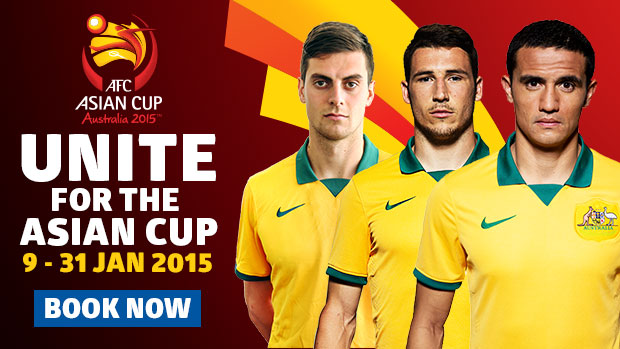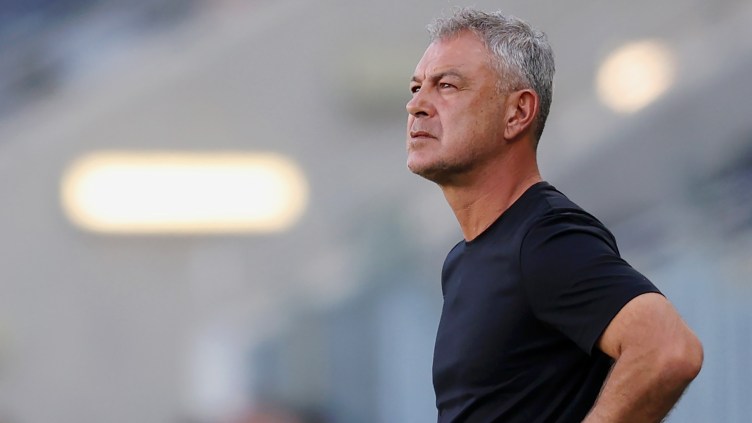For a month in 2015 the Hyundai A-League will stop to allow Australia to host the biggest football tournament of the year; the AFC Asian Cup.
From its humble beginnings in 1956, the Asian Cup has grown into the continent’s biggest football event, one that stands proudly alongside all top level competitions around the globe in terms of excitement, entertainment and organisation.
Within the span of five decades the Asian Cup has encompassed the huge continent bringing together Asia’s top national teams every four years in a fantastic feast of top-notch football.
Two years after AFC came into being in 1954, the first ever Asian Cup was staged in Hong Kong with seven of the 12 founding members vying for the title to become Asia’s best football team.
While the first edition featured only seven teams, the 2015 edition promises to be a global phenomenon with Asia’s 16 top nations primed to participate, having represented more than half of the world’s population in the qualifying stages before the field was whittled down to the final 16.
The dominance factor has swung between the East and West so far. From the superiority of Korea Republic in the early years of the competition, the tournament became the preserve of the mighty Iranians who won three consecutive tournaments from 1968 to 1976.
West Asian countries ruled in the eighties with Kuwait becoming the first country from the Arab region to win the championship in 1980, followed by Saudi Arabia’s consecutive wins in 1984 and 1988.
Defending champions Japan hold the record for the most victories in the tournament’s history with title triumphs in 1992, 2000, 2004 and 2011.
Having moved from the Oceania confederation Australia first competed in the Asian Cup in 2007. Following their impressive World Cup performance in Germany the year before, Australia went into the tournament with high expectations but after failing to win against Oman and Iraq in the Group Stages faced an early exit from the tournament.
Needing a large win against Thailand to qualify for the knockout rounds, things looked shaky with only ten minutes to go.
A Michael Beauchamp goal meant Australia was leading 1-0 but if the score line remained the Thais would progress due to goal difference. Thankfully for the Australians a last gasp double by Mark Viduka and an injury time goal to Harry Kewell saw the Socceroos progress to the Quarter Final.
There the Aussies faced Japan and took the lead through John Aloisi! The reply from Japan was swift as the equalised in under two minutes and proceeded to defeat the Socceroos via penalties after misses from Kewell and Lucas Neil.
The Iraqis famously defeated Saudi Arabia 1-0 in the summit clash in the Final that year. The fairy-tale win left the then war-torn nation elated in a clear sign of football’s immense power to bring people together as their thrilling triumph at the Gelora Bung Karno in Jakarta hogged the limelight the world over.
The Socceroos second appearance in the tournament was a lot more successful but ultimately just as heart-breaking.
Haunted by their 2007 experience, Australia made sure they breezed through the Group Stage in Qatar, scoring six goals as they finished above South Korea, Bahrain and India to set-up a Quarter Final clash with Iraq.
The darlings of the 2007 tournament, and Australia’s nemesis in the Group Stage of that year were no easy beats and it took a moment of Kewell magic in extra time to earn the win as he headed in a brilliant Matt McKay cross only two minutes before penalties.
The Semi-Final was a more straight forward occasion as they Socceroos smashed a hapless Uzbekistan 6-0 before a chance at redemption against Japan in the Final.
Australia did everything right except hit the back of the net; dominating almost the entire match, the Socceroos hit the post and had wasted chances to win the match through Kewell, Matt McKay, Brett Emerton, Tim Cahill and Robbie Kruse.
In the end two defensive errors from Luke Wilkshire and David Carney allowed Tadanari Lee to score a cracking volley to win the match for Japan and force the Socceroos to wait at least four more years for continental glory.
Women’s Asian Cup
The most recent Women’s Asian Cup was recently completed in 2014 with Japan walking away with the title following a 1-0 win over defending champions Australia.
The Australian’s had won their nation’s first ever Asian silverware four years prior after knocking out South Korea and Japan en route to defeating DPR Korea on penalties after the 2010 Final finished at 1-1.
In their first ever appearance in 2008, Australia finished in fourth place having fallen to eventual winners DPR Korea in the Semi-Final.




